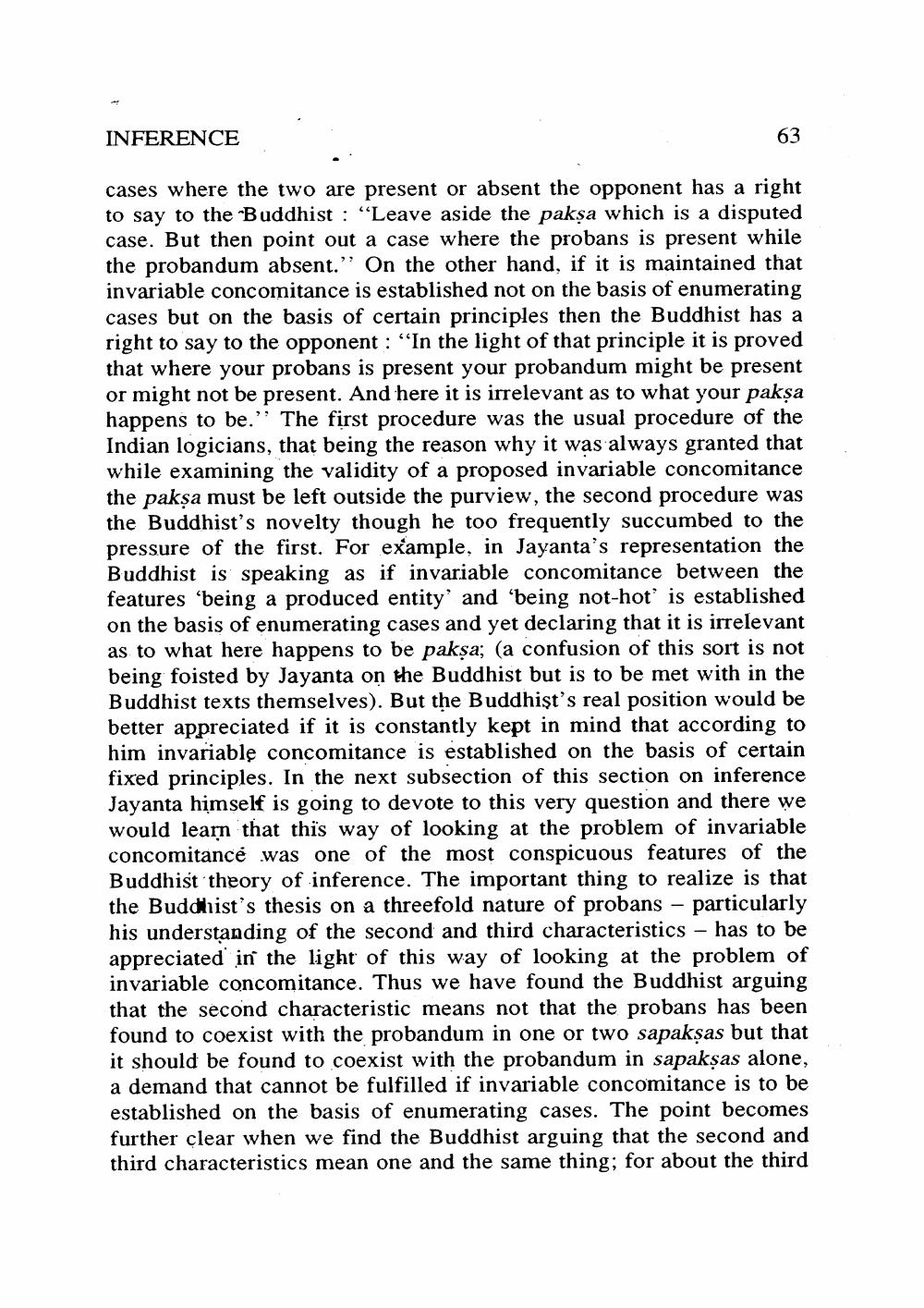________________
INFERENCE
63
cases where the two are present or absent the opponent has a right to say to the Buddhist : “Leave aside the paksa which is a disputed case. But then point out a case where the probans is present while the probandum absent. On the other hand, if it is maintained that invariable concomitance is established not on the basis of enumerating cases but on the basis of certain principles then the Buddhist has a right to say to the opponent : “In the light of that principle it is proved that where your probans is present your probandum might be present or might not be present. And here it is irrelevant as to what your paksa happens to be. The first procedure was the usual procedure of the Indian logicians, that being the reason why it was always granted that while examining the validity of a proposed in variable concomitance the pakṣa must be left outside the purview, the second procedure was the Buddhist's novelty though he too frequently succumbed to the pressure of the first. For example, in Jayanta's representation the Buddhist is speaking as if invariable concomitance between the features being a produced entity' and 'being not-hot' is established on the basis of enumerating cases and yet declaring that it is irrelevant as to what here happens to be pakşa; (a confusion of this sort is not being foisted by Jayanta on the Buddhist but is to be met with in the Buddhist texts themselves). But the Buddhişt's real position would be better appreciated if it is constantly kept in mind that according to him invariable concomitance is established on the basis of certain fixed principles. In the next subsection of this section on inference Jayanta himself is going to devote to this very question and there we would learn that this way of looking at the problem of invariable concomitance was one of the most conspicuous features of the Buddhist theory of inference. The important thing to realize is that the Buddhist's thesis on a threefold nature of probans - particularly his understanding of the second and third characteristics - has to be appreciated in the light of this way of looking at the problem of invariable concomitance. Thus we have found the Buddhist arguing that the second characteristic means not that the probans has been found to coexist with the probandum in one or two sapaksas but that it should be found to coexist with the probandum in sapaksas alone, a demand that cannot be fulfilled if invariable concomitance is to be established on the basis of enumerating cases. The point becomes further clear when we find the Buddhist arguing that the second and third characteristics mean one and the same thing; for about the third




